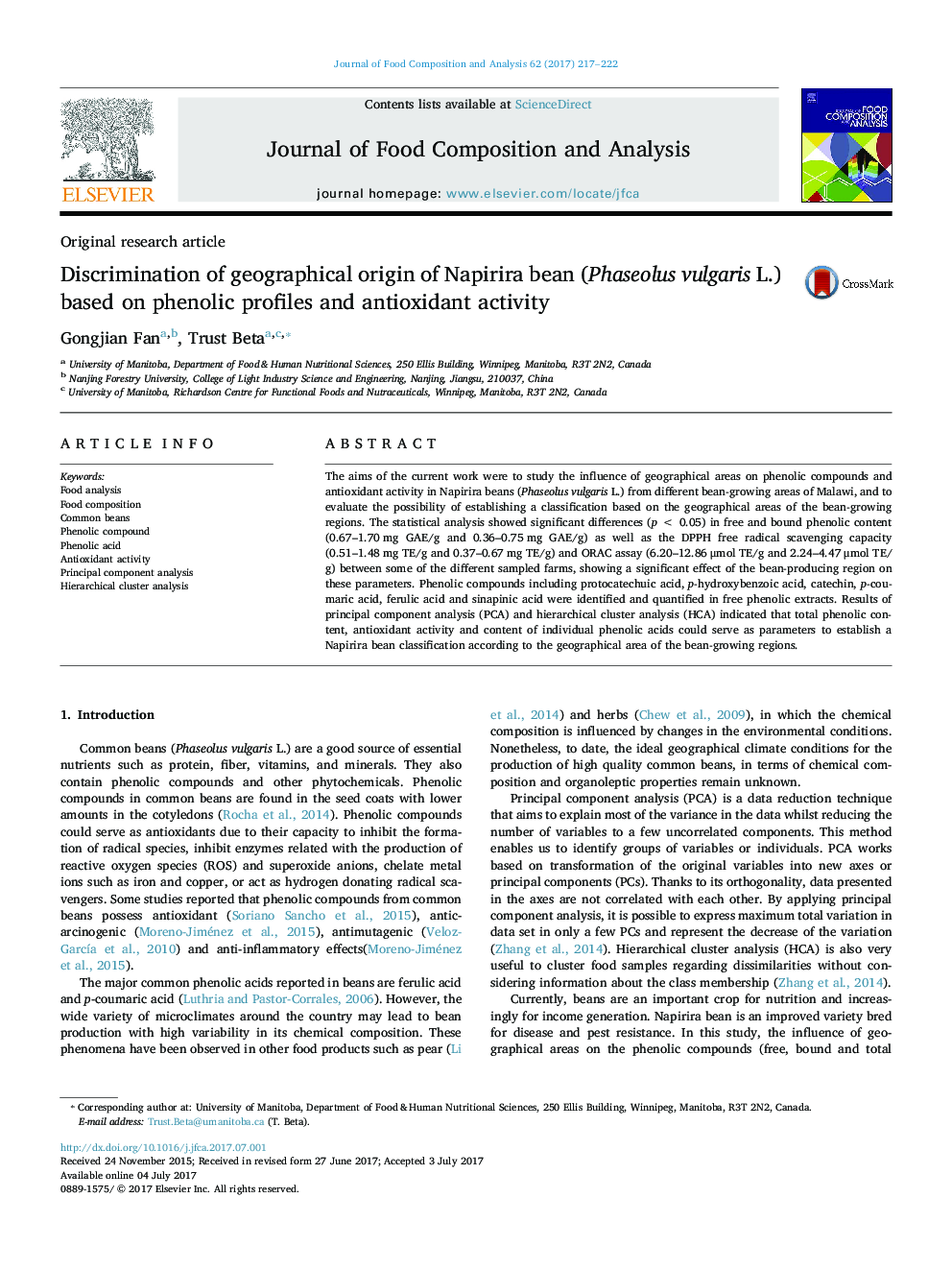| Article ID | Journal | Published Year | Pages | File Type |
|---|---|---|---|---|
| 5136879 | Journal of Food Composition and Analysis | 2017 | 6 Pages |
â¢Napirira bean represents excellent sources of phenolic compounds.â¢Statistical analysis showed significant differences in TPC, DPPH and ORAC.â¢The main phenolic compounds were identified and quantitated by HPLC.â¢PCA and HCA were applied to evaluate geographic variations in beans.
The aims of the current work were to study the influence of geographical areas on phenolic compounds and antioxidant activity in Napirira beans (Phaseolus vulgaris L.) from different bean-growing areas of Malawi, and to evaluate the possibility of establishing a classification based on the geographical areas of the bean-growing regions. The statistical analysis showed significant differences (p < 0.05) in free and bound phenolic content (0.67-1.70 mg GAE/g and 0.36-0.75 mg GAE/g) as well as the DPPH free radical scavenging capacity (0.51-1.48 mg TE/g and 0.37-0.67 mg TE/g) and ORAC assay (6.20-12.86 μmol TE/g and 2.24-4.47 μmol TE/g) between some of the different sampled farms, showing a significant effect of the bean-producing region on these parameters. Phenolic compounds including protocatechuic acid, p-hydroxybenzoic acid, catechin, p-coumaric acid, ferulic acid and sinapinic acid were identified and quantified in free phenolic extracts. Results of principal component analysis (PCA) and hierarchical cluster analysis (HCA) indicated that total phenolic content, antioxidant activity and content of individual phenolic acids could serve as parameters to establish a Napirira bean classification according to the geographical area of the bean-growing regions.
